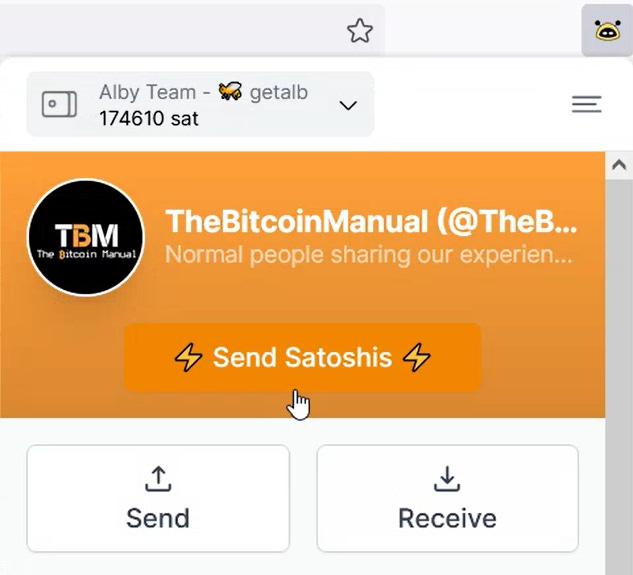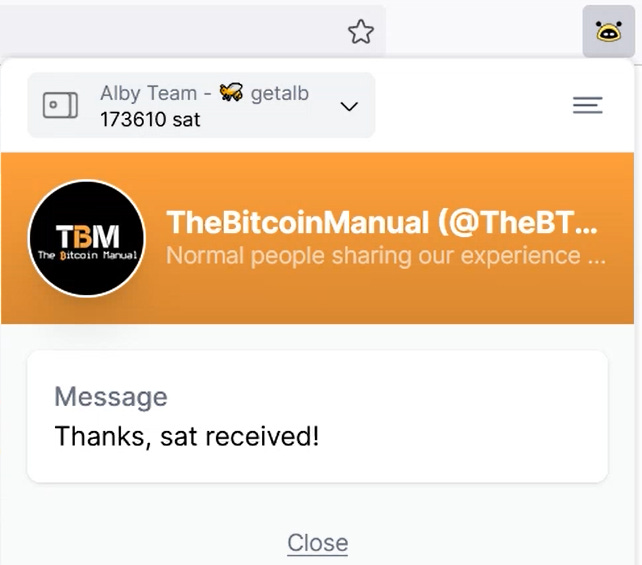Using Alby to Send Bitcoin on Twitter

At Alby, we address the internet's broken monetization model by providing the most convenient tools to exchange bitcoin seamlessly and instantly. We believe every person has the right to participate fully in the global digital economy. And that is made possible by a model of value exchange most suited for the internet - Value 4 Value (V4V). Read our blogpost where we dive deep into V4V. And follow it up by creating a Lightning Address to receive V4V payments from your audience. The integration is very simple and enables you to receive payments within seconds!
Watch the video below to know how you can send payments on Twitter.
Step 1: Visit the Twitter account of the profile you want to send sats to

When Alby detects the Lightning Address, it will wake up and open its eyes-

The Lightning Address can be found in the bio. It looks like an email address and is accompanied by a lightning symbol -

Here, thebtcmanual@getalby.com is the Lightning Address.
Step 2: Click on the Alby extension

Your wallet will drop down with the profile of the creator and the list of your recent transactions.
Step 3: Click on ‘Send Satoshis’

The details of who you’re sending payment to along with a description will appear
- Choose the number of sats you want to send
- You can leave your name, email or comment, if you see those options.* Comments can be a great way to share your appreciation, ask a question or leave your personal info should you wish to be contacted by the creator.
Step 4: Click on ‘Confirm’

Aaaand you are done!
Do check out how you can send Bitcoin on various social media platforms too. Remember, Lightning Addresses are interoperable. You can get one from Alby or any of these services that support it.
*You won't see these options in all cases as that depends on whether the wallet or service you are using has implemented the LNURL spec. Different wallets and services may implement different sets of protocols since these are optional. However, they maintain compatibility with each other except when a service requires a new functionality.